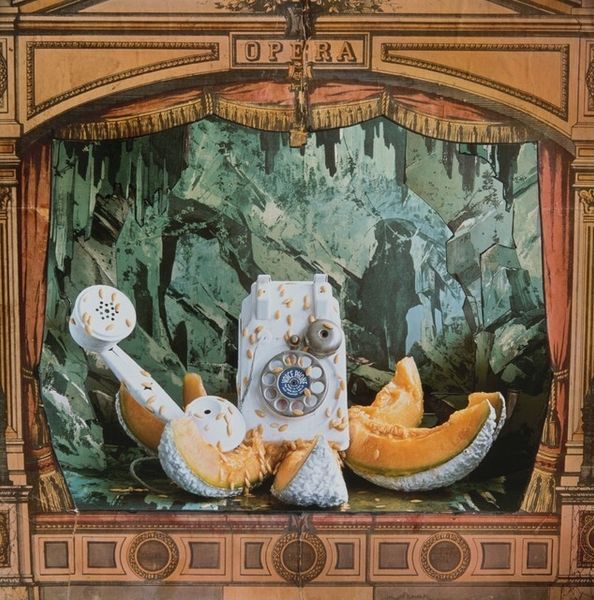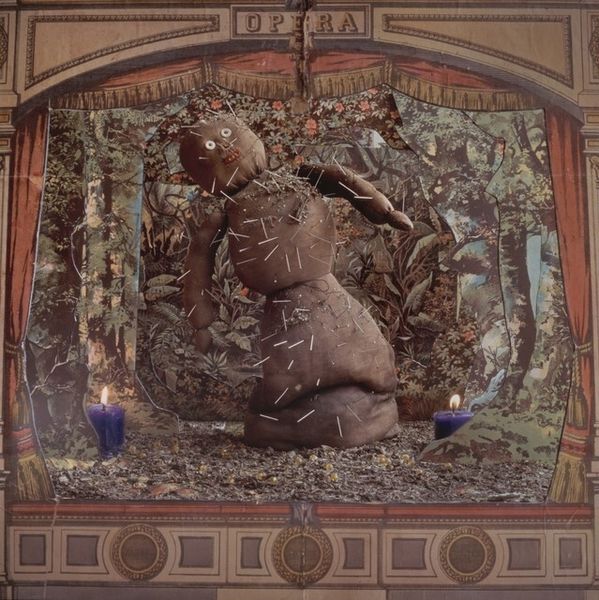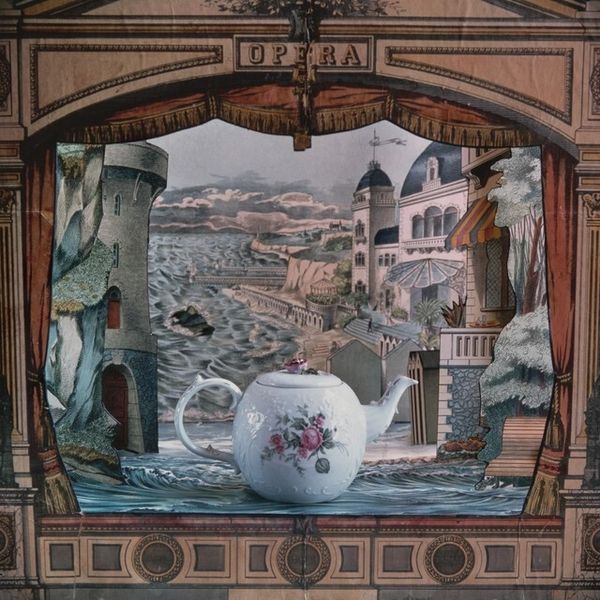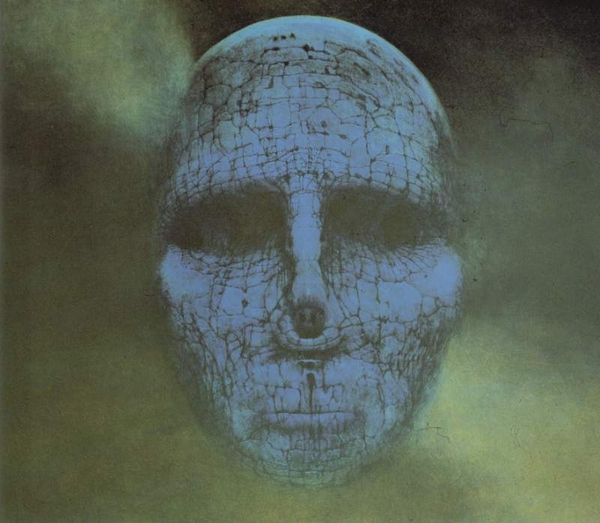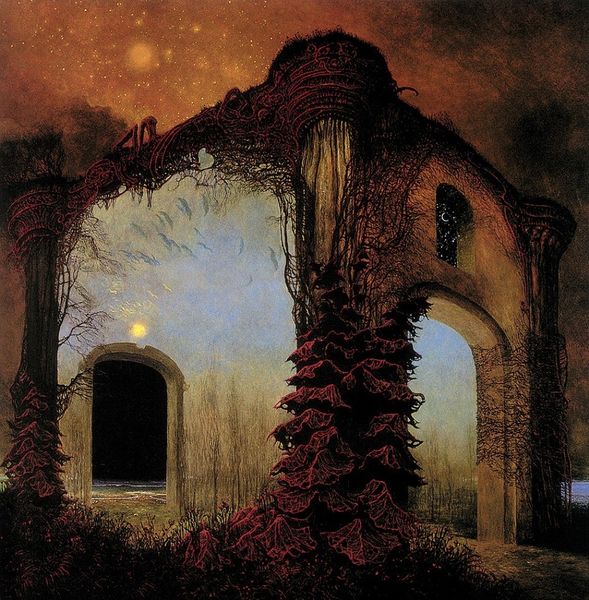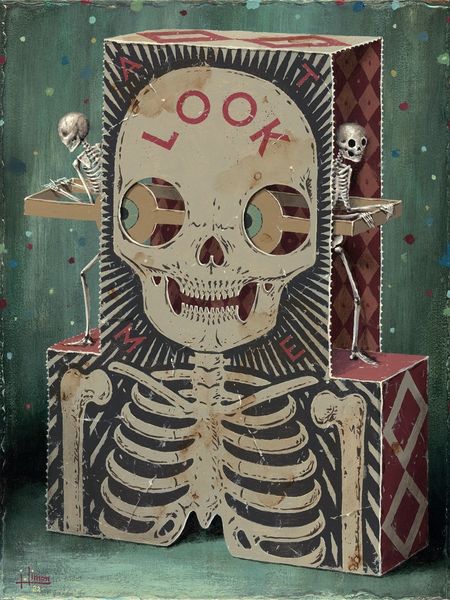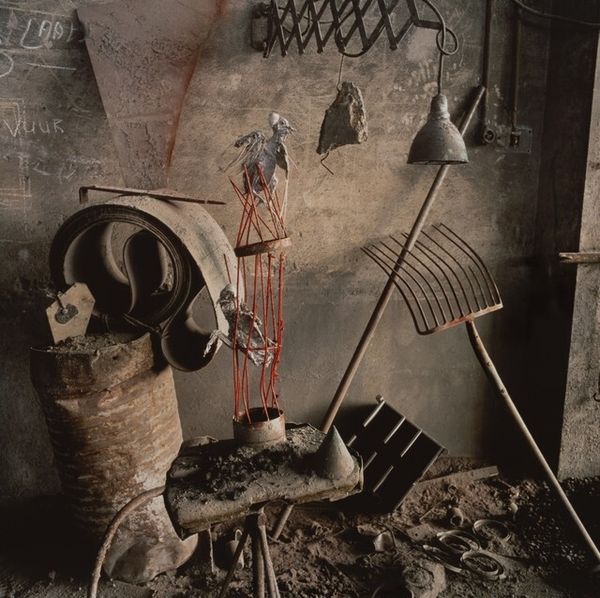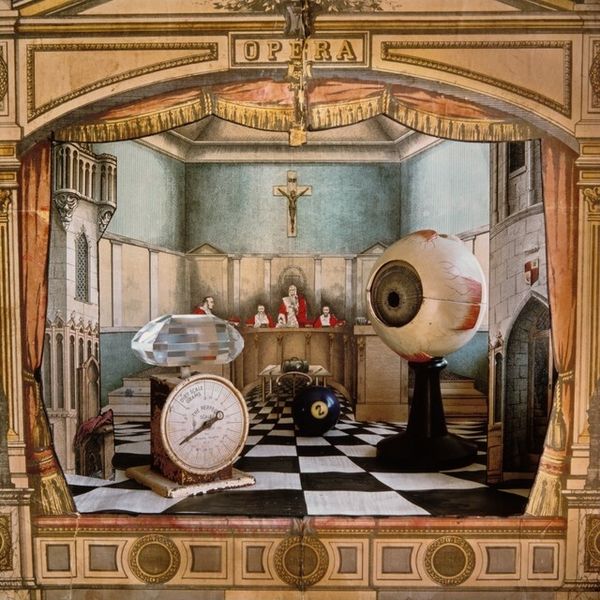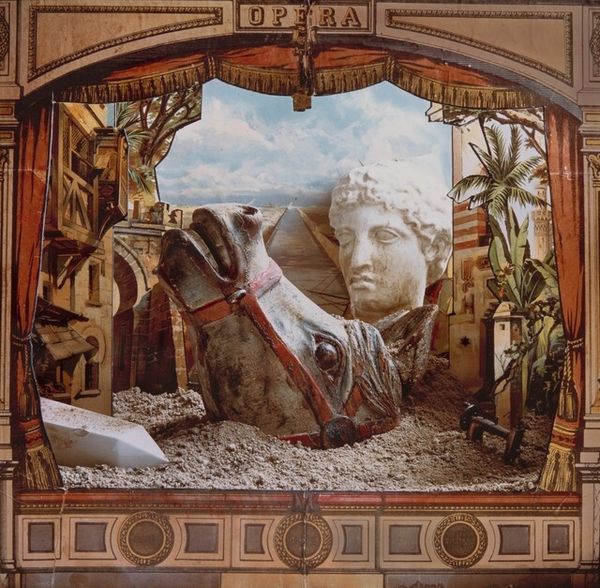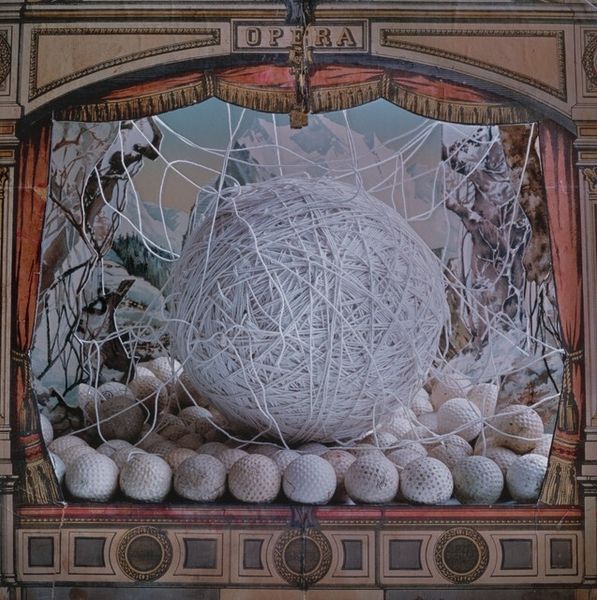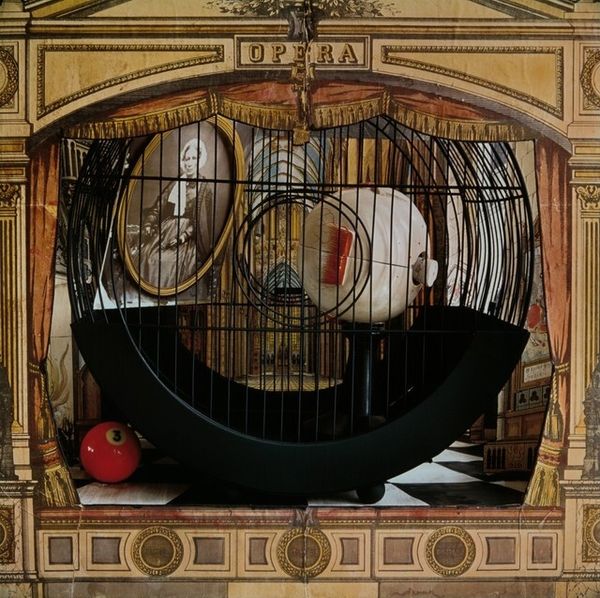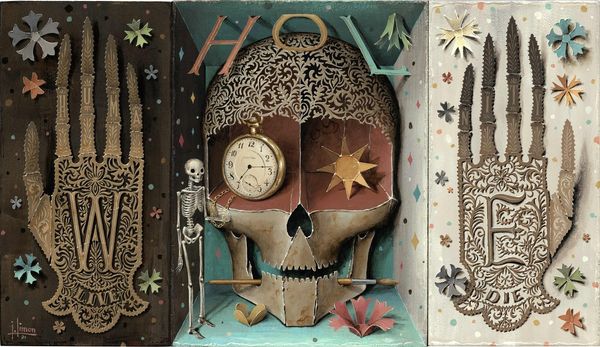
Dimensions: image: 26.5 × 26.5 cm (10 7/16 × 10 7/16 in.) sheet: 27.94 × 33.02 cm (11 × 13 in.)
Copyright: National Gallery of Art: CC0 1.0
Curator: This mixed media piece, "Act I: The Birth of Ideas: Death," is by Arthur Tress, likely created between 1980 and 1981. It presents a complex layering of imagery, incorporating both watercolor elements and found objects. What are your initial impressions? Editor: Foreboding! The stark skull against that faded theatrical backdrop is intensely melancholic. There’s an immediate sense of memento mori—the juxtaposition feels loaded with social commentary about performance, perhaps societal roles, and the inevitability of death that underlies it all. Curator: Exactly. The piece is heavily reliant on the construction of its various parts: the flat plane of the backdrop, the water color techniques used to create this theatrical background, which reads like a dilapidated opera stage... How does that structure inform our reading? Editor: Well, placing that skull so centrally dismantles any sense of escapism the stage might promise. It pushes the viewer to consider questions about power structures within society that allow a very performative idea of life when the means of production often means early death for many... who really benefits? What does the stage truly represent? Curator: That's a fantastic reading. Tress deliberately positions the skull—seemingly a found object and not part of the watercolor itself—to confront the artifice inherent in theatrical representation. What of that title though: The Birth of Ideas? It feels contradictory. Editor: Yes, "The Birth of Ideas: Death"... It positions death not as an end, but as a catalyst, challenging Western cultural biases where youth and life equal success and wisdom. Here, instead, we're prompted to reevaluate our perception. I'm drawn to the artist's implication that genuine innovation comes from contemplating our own mortality. Curator: It's a powerful piece precisely because it marries a concrete object, the skull itself, with such intricate crafting in the painted details. We, as the viewer, must recognize and interrogate the interplay between production and philosophy, and come away from the work perhaps feeling unsettled about what role art plays. Editor: Absolutely. It lingers, doesn’t it? Posing uneasy questions about whose stories are deemed worthy of the stage and what voices we fail to honor until after death... a powerful invitation to disrupt such oppressive narratives.
Comments
No comments
Be the first to comment and join the conversation on the ultimate creative platform.
